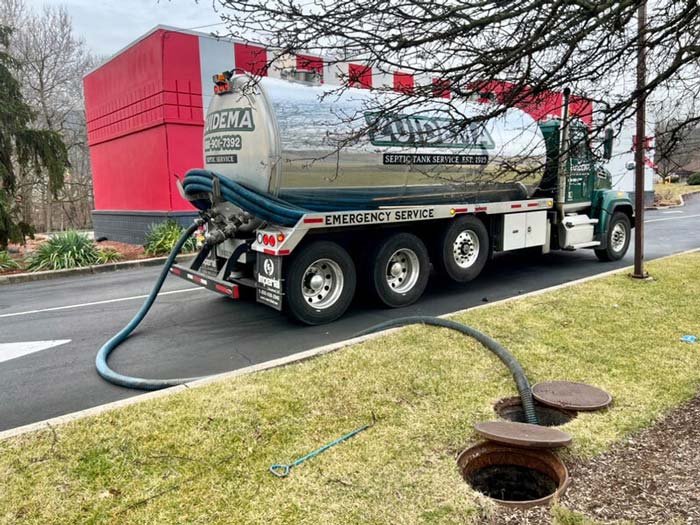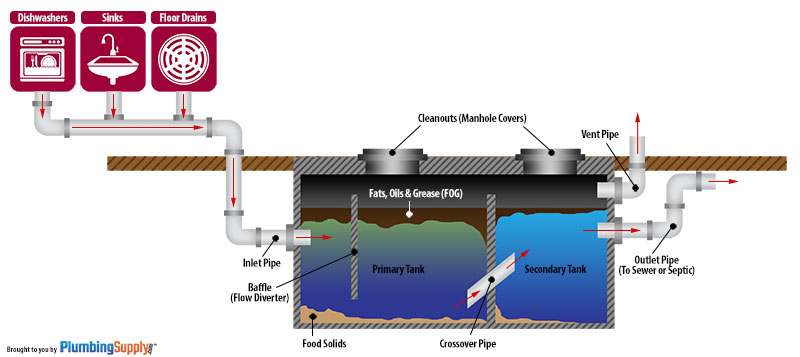Commercial Grease Trap Cleaning
Commercial Grease Trap Cleaning in New Jersey and New York

What is a Grease Trap and Why is it Essential?
A grease trap, also known as a grease interceptor, is a plumbing device designed to capture fats, oils, and grease (FOG) from wastewater before it enters the municipal sewer system. Commercial kitchens, such as those in restaurants, hotels, schools, and hospitals, produce a significant amount of FOG from cooking and washing dishes. If this grease enters the sewer lines, it cools, solidifies, and builds up, causing severe blockages, sewer backups, and environmental hazards.
A functioning grease trap is non-negotiable for businesses in bustling areas of New Jersey and New York. It prevents costly plumbing emergencies that can shut down your operations and helps you stay compliant with local health and environmental codes.
How Does a Grease Trap Work?
The principle behind a grease trap is simple and relies on the fact that FOG is less dense than water.
- Wastewater Entry: Wastewater from your kitchen sinks and dishwashers flows into the grease trap.
- Separation: Inside the trap, the flow of water slows down. This allows the heavier solid food particles to sink to the bottom, forming a layer of sludge.
- FOG Collection: The lighter fats, oils, and grease float to the top, forming a layer of scum.
- Clean Water Exit: Baffles within the tank prevent the FOG and sludge from escaping. The clearer water from the middle layer then flows out of the trap and into the main sewer system.
Over time, the layers of FOG and sludge accumulate, reducing the trap's efficiency. Without regular cleaning, the trap will become clogged, leading to serious problems.
The Importance of Professional Grease Trap Pumping
- Thorough Cleaning: Professionals use powerful vacuum trucks to completely empty the grease trap, removing all layers of FOG, water, and sludge. This is far more effective than simply skimming the top layer of grease. A complete pump-out ensures the system is reset to optimal performance.
- Compliance: Municipalities across New Jersey and New York have strict regulations regarding FOG disposal. Professional services ensure that the collected waste is transported and disposed of at a licensed facility, providing you with the necessary documentation to prove compliance during health inspections.
- Preventing Emergencies: Proactive grease tank cleaning prevents blockages that can cause wastewater to back up into your kitchen. A backup is not only a health code violation but can also force your business to close for cleanup and repairs, resulting in lost revenue and a damaged reputation.
- Odor Control: A full or poorly maintained grease trap is a primary source of noxious odors that can permeate your kitchen and dining areas, driving away customers. Regular cleaning eliminates these foul smells at their source.
Grease Trap Cleaning for Restaurants: What to Expect
1. Inspect the Trap:
2. Pump Out the Contents:
3. Scrape and Clean:
4. Inspect Mechanical Parts:
5. Document the Service:
Why Choose Zuidema Septic Services & Portable Toilets for Commercial Grease Trap Cleaning?

